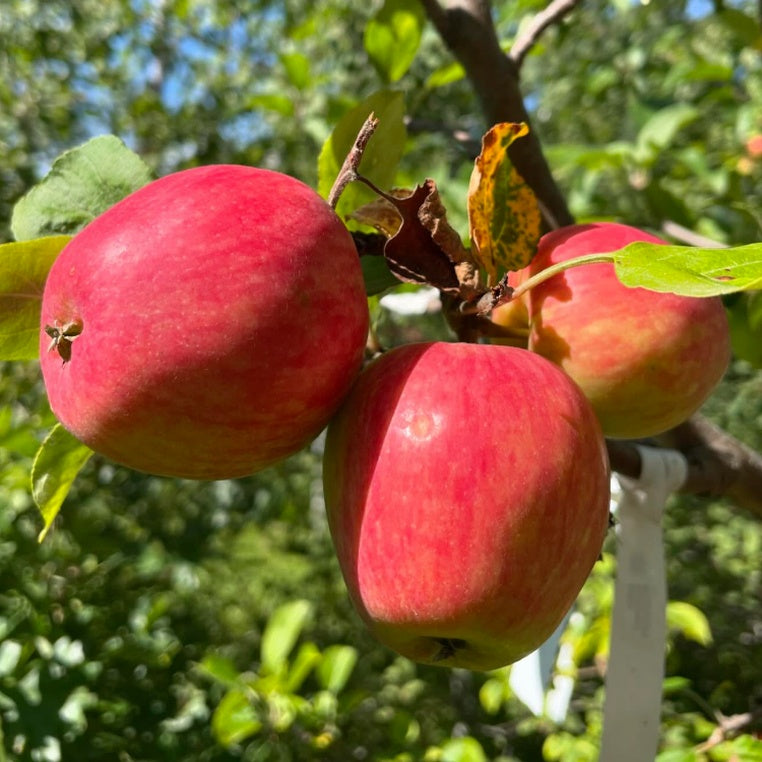Oak Summit Nursery
Norland Apple Tree
Norland Apple Tree
Regular price
$44.00 CAD
Regular price
Sale price
$44.00 CAD bbb
Unit price
per
Couldn't load pickup availability
The Norland apple, a medium-sized variety growing up to 2 ½ inches (5 cm) wide, was developed in Canada from a cross between Rescue and Melba apples. It was bred by Dr. C.R. Ure for the Prairie Fruit Breeding Cooperative at Agriculture Canada's Morden Research Station in Morden, Manitoba, and introduced in 1979. The Norland apple is known for its pale green skin covered with red stripes and off-white, slightly coarse, juicy flesh that offers a sweet taste.
This variety is considered all-purpose, suitable for fresh eating, pies, sauces, and cider making. Norland apples are best when consumed soon after harvest as they don't store well, typically lasting only about a month. However, if picked slightly underripe, they can be stored for up to two months. The fruit ripens early in the season, usually in early August.
The Norland apple tree is very cold hardy, with a moderately vigorous, upright spreading growth pattern. It is a naturally dwarfing tree that rarely grows taller than 15 feet and starts bearing fruit within three to four years of planting, producing annually. The tree is somewhat susceptible to blight and, in wet weather, to scab. It thrives in USDA Hardiness Zone 2, making it suitable for very cold climates.
Ripens: Early August
Size: Up to 2 ½ inches (5 cm)
Cold hardiness zone: 2
This variety is considered all-purpose, suitable for fresh eating, pies, sauces, and cider making. Norland apples are best when consumed soon after harvest as they don't store well, typically lasting only about a month. However, if picked slightly underripe, they can be stored for up to two months. The fruit ripens early in the season, usually in early August.
The Norland apple tree is very cold hardy, with a moderately vigorous, upright spreading growth pattern. It is a naturally dwarfing tree that rarely grows taller than 15 feet and starts bearing fruit within three to four years of planting, producing annually. The tree is somewhat susceptible to blight and, in wet weather, to scab. It thrives in USDA Hardiness Zone 2, making it suitable for very cold climates.
Ripens: Early August
Size: Up to 2 ½ inches (5 cm)
Cold hardiness zone: 2
Materials
Materials
Dimensions
Dimensions
Care information
Care information


